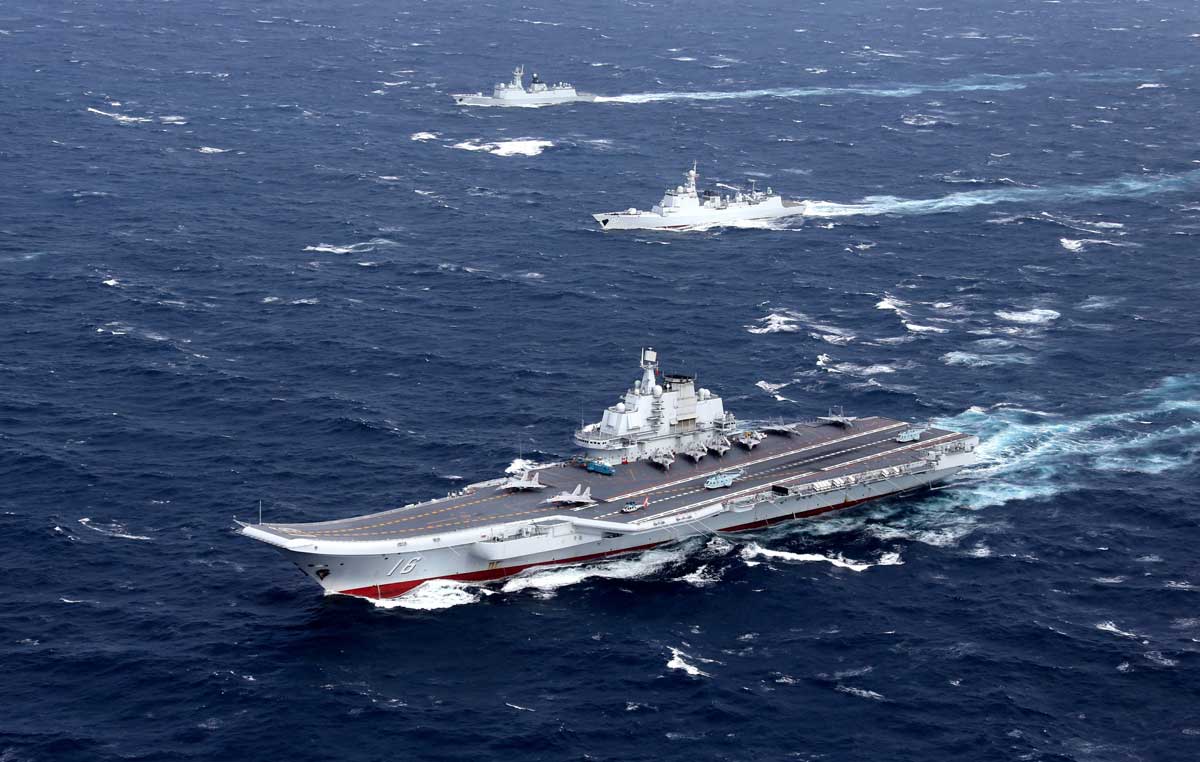A careful observer would identify the growing security dynamics in the Indian Ocean are encompassing the Indian subcontinent and the problem confronting the Indian Ocean cannot be addressed by aggression as it could worsen the consequences. The most recent incident, which made a stir in the regional security architecture was the visit of China’s research ship Xiang Yang Hong 03 in Maldives. Chinese ship was granted the permission by Maldives as China affirmed the position of the ship for a peaceful purpose and aimed at contributing to the scientific understanding of the ocean. Visit of Xiang Yang Hong 03 is connected with the growing Sino-Maldivian pact after the election of Maldives new president Mohamed Muizzu, who recently completed a successful visit in China. Maldives tilt towards China hampers Indian regional security framework in the Indian Ocean by adding one more burden to its security concern. From a vantage point, the deviation of Maldives from Delhi’s orbit resembles how Sri Lanka developed a rapport with China under Rajapaksa regime, which resulted in a formidable Chinese presence in India’s backyard.
The Chinese sphere of influence has now enlarged and gradually altered the Indian Ocean space by making a fiasco for Indo-US strategic partnership. Maldives’ decision to welcome Zian Yang Hong 03 brought its subsequent effects within a few days as India arrested a group of fishermen from Maldives within their own Exclusive Economic Zone indicating India’s rage. In the Sri Lankan front, an Indian Navy Submarine INS Karanj arrived in Colombo port ahead of Sri Lankan independence marking its first overseas port call since its commissioning. The visit of INS Karanj is timed to coincide with Colombo’s decision to ban Chinese research vassals from docking at its ports or operating within its Executive Economic Zone, for one year, which came into effect after the request made by the apex diplomatic channels in New Delhi.
Before his demise, Kissinger warned that if present US-China tension continues, world will slide into a situation similar to World War 1. The history shows how German naval expansion irked Britain paving the path for the Great War and the current Chinese naval ambitions are tantamount to the Triptiz Trap faced by Imperial Germany under Kaiser in the early 20th century.
Following the same pattern adopted in the South China Sea, Bejing tends to transform the equilibrium of the Indian Ocean. When the Chinese started developing the expansion of its navy under Ding Xiaping, their strategic interest in the Indian Ocean became widely visible. One of the former admirals of PLAN professed their reluctance to accept the Indian Ocean as an ocean confined to India’s supremacy as it became obvious that China would need to consolidate its presence in IOR to confront its Malacca dilemma.
One can trace a stark similarity of Beijing’s approach to the South China Sea and Indian Ocean. For instance, in its infancy stage, China began to send fishing vessels to the South China Sea often, which gradually transformed into the deployment of artificial islands and other marine objects. China is adamant in not respecting decision of the international arbitration court, which shows Beijing’s sheer contempt towards international law.
The conspicuous reality of Chinese presence emanating from the Indian Ocean is that it has reached a point of no return. Not limiting to economic development, China established its first overseas military base in Djibouti in 2017 with a justification that it is China’s obligation to achieve stability in the region. China’s tilt towards the Indian Ocean has not been quick as it carefully selected the actions firstly through cooperation, then slow penetration to gradually promote the expansion of its sea power. The slow penetration that the Chinese chose has a greater degree of success as it is aligned with shaking the financial and political susceptibility of the countries. For example, after acquiring Hambantota port for 99 years and legitimizing its Colombo Port City Project, China used its financial muscle in Colombo to undermine any possible Indo-US strategic ambitions encompassing Sri Lanka. Colombo’s decision to grant permission to the Chinese spy vessel Yuan Wang 5 in 2022 August regardless of Delhi’s security concerns should be fathomed in a context, in which China controls default Sri Lanka.
Denial of Chinese expansion in the Indian Ocean is not a prudent speculation. It is beyond conjecture that Beijing has successfully placed its presence from Gwadar port in Pakistan to Hambantota in Sri Lanka and now the Maldives seems to have been taken into the orbit of China as the newest target in the Indian Ocean. The spy ship welcomed by the Maldivian authorities recently operates under China’s Strategic Support Force ( SSF) of the People’s Liberation Army ( PLA). According to Elizabeth C. Economy, who authored “The World According to China “the SSF is designed to serve as a coordinating body for military and civilian research. If her hypothesis is true, the regular visits of Chinese spy ships under the guise of scientific research generate serious security concerns. Moreover, China’s entry into India’s immediate periphery will make New Delhi aware of China’s naval ambition, which will lead to bolstering the US-Indo security alliance by galvanizing various security alliances like QUOD and AUKUS. At the same time, its emphasis on hard power, debt traps and manipulating the local elites aggrandize China as a revisionist power with its “wolf warrior diplomacy”.
From Mackinder to Kaplan, thinkers representing various generations have often referred to the perennial value of the Indian Ocean. Today, the evolving Chinese presence in the Indian Ocean challenging the US- India-led Indo-Pacific strategy denotes the Indian Ocean as the center of gravity. From one side India- US-led allies are in the process of institutionalizing the security alliances for a rule-based order while China is engaged in expanding the naval expansion. The current ongoing security caldron in the Indian Ocean is a resemblance to the German naval expansion in the Atlantic Ocean before the Great War.
